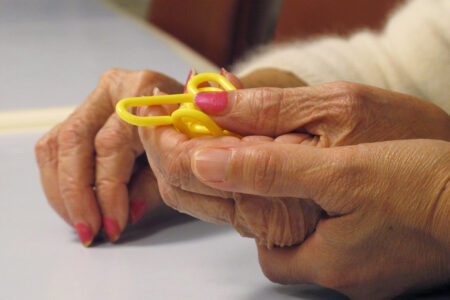
(This article was translated from the French.)
In Western societies, homelessness uncovers the social fragilities that are produced by those societies. In this sense, how homelessness is managed is indicative of social and institutional norms. The Réseau d’aide aux personnes seules et itinérantes de Montréal estimates that more than 10 percent of inmates currently in Quebec prisons have no fixed abode. But it should also be noted that homeless people are more likely to be the victims than the perpetrators of crimes.
Homeless people are more likely to have mental health problems than the population as a whole. They are also more likely to have alcohol- or drug-use-related health problems. It is therefore not surprising that they are more likely to be victims of crime than the general population. They are particularly vulnerable to theft, assault and violence when they live in shelters, and they often suffer from post-traumatic stress related to violence they have experienced.
The homeless are just as likely to be attacked or assaulted by others living on the streets as they are by ordinary people. They are also victimized by the criminalization of the things they do on a daily basis or to survive, such as loitering, panhandling, sleeping on a park bench or disturbing the peace. Since they are usually unable to pay fines, they are often incarcerated.
The majority of the offences committed by homeless people involve disturbing the peace or disrupting public order. They are most commonly arrested for burglary, shoplifting and auto theft. While the rate at which they are charged with property crimes (especially those they commit in order to survive) is higher than average, they are less likely to be charged with violent crimes.
They sometimes use illegal means to meet their basic needs. To obtain alcohol or drugs, some sell drugs or engage in prostitution. There has been little research into relations between the police and homeless people. Under Quebec’s 2010-13 interministerial homelessness action plan, however, the Ministère de la Sécurité publique du Québec undertook to sensitize police departments to the issues around homelessness and to provide training for police.
When homeless people leave prison and are not equipped for finding work or housing, they risk becoming homeless again or returning to crime. And the probability of contact with the justice system increases with time spent on the street: the longer they live on the street, the more likely they are to be arrested. This probability is even higher among homeless people who do not use shelters.
Studies have found that homeless men are more likely than homeless women to steal and to be imprisoned, while young homeless women are more likely to be involved in prostitution. Property crimes (particularly break-ins) are committed by women and men equally. Often women become homeless after escaping from an abusive relationship or a violent family member. The research also shows that women are more vulnerable than men when they lose their housing.
Recent statistics now support the observation of a large increase in the number of Indigenous people living on the streets, especially in cities. More research needs to be done on Indigenous homelessness, which is rooted in specific cultural, social and historical factors.
In most Western countries, the criminalization of homelessness has been reinforced by social representations of the “vagabond” and the “beggar.” These figures are portrayed as potentially dangerous because of their way of life, which is contrary to prevailing values and the foundations of society: work and property.
Homeless people are perceived in essentially two ways. On the one hand they are regarded as having chosen the lifestyle they lead and as responsible for their circumstances. Alternatively, they are seen as victims of society for various reasons: the lack of affordable housing, the extreme poverty experienced by certain people, physical and mental disabilities, and the lack of social services. But as criminology and sociology teach us, the notion of “risk” does not in itself exist but is rather a social construct. The determination of which populations are at risk of becoming homeless is in general entrusted to experts or based upon citizens’ views regarding the potential danger or nuisance represented by certain groups.
Of the many prejudices against homeless people, the most common are that they are lazy, alcoholics, liars, loafers, crazy or bad. To investigate the perceptions of homelessness, it is necessary to understand how society views the phenomenon, as well as how it is experienced by homeless people themselves. Homelessness must be viewed through the lens of exclusion, marginalization and vulnerability. This will require an emphasis on raising awareness of the issue, as well as improving our understanding of criminality among homeless people, breaking down the stereotypes and reinforcing homelessness intervention prevention and programs.
To assist and support homeless people, all forms of social integration must be encouraged. Quebec’s 2015-20 interministerial homelessness action plan, tabled in December 2015, adds $4.6 million to the existing budget over five years for the fight against homelessness. This plan succeeds the 2010-13 plan and takes its results into account. Since 2010, the plan has enabled shelters to be refurbished, increased the number of emergency beds, expanded the outreach program for homeless people and provided shelters and day centres with adequate facilities.
It is widely accepted that housing stability is a key factor in fighting homelessness. The Réseau Solidarité itinérance du Québec has been pushing for many years for a policy around the following six rights for homeless people: the right to freedom of the city, health care, education, a decent income, housing and a network of assistance and solidarity.
More research is needed into what determines the vulnerability to becoming homeless, the processes that lead to criminality among homeless people and their criminalization, and best approaches to support intervention. Over the next few years there also needs to be a rigorous evaluation of existing programs to support homeless people.
This article is part of the Widening the Lens on Criminal Justice Reform special feature.
Photo: Shutterstock, by Jacek Wojnarowski
Do you have something to say about the article you just read? Be part of the Policy Options discussion, and send in your own submission. Here is a link on how to do it. | Souhaitez-vous réagir à cet article ? Joignez-vous aux débats d’Options politiques et soumettez-nous votre texte en suivant ces directives.







